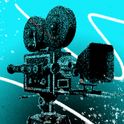Attention spans are getting shorter. We no longer have the patience to read properly. The printed codex is a dead technology and the future is browsing ebooks and hyperlinked webpages. Listening to an audiobook isn’t as good as reading a proper book. These are some common arguments you hear. But are they right? Leah Price, an English scholar at Harvard, says we’re too quick to assume that there was a golden age of reading from which we have declined. Prospect’s Sameer Rahim talked to Price about her new book, What We Talk About When We Talk About Books, down the line from America. This conversation has been edited for length and clarity.
Sameer Rahim: Towards the end of the book, you quote Marshall McLuhan writing in 1966, who listed books as an example of outdated antiques. People have been declaring the end of the book for a while, haven’t they?
Leah Price: When people talk about the death of the book, they’re often talking about two quite different things. One is the death of a particular kind of object that looks and feels and smells a certain way. And the other is a set of practices or activities, which that object has sometimes prompted. You might think of that as the difference between form and function. Personally, I’m not concerned about the survival of the object; I am very concerned about the survival of those human practices or activities.
SR:There’s this myth of an ideal reader, isn’t there?
LP: In the digital age we think of someone reading a printed book curled up in bed or sprawled under a tree, reading for pleasure, probably some classic work of imaginative literature. But for most of the history of printed books, that kind of reading has been distinctly in the minority. If you asked people in Britain or in the US a generation ago what book they had in their house, the most common answers would have been a Bible and a telephone book. So when we blame the absence of printed books for the distraction and the impatience and superficiality of the digital world, it’s unfair. We’re comparing an ideal scenario of print reading with a more realistic assessment of digital reading. We kid ourselves if we think that the presence of printed books would magically make us more attentive and more focused.
SR:On social media, you see people posting pictures of themselves reading or piling up the hardbacks they’ve read that month. It’s a performance of a kind of bookish identity, if you will.
LP: If you look at the Kindle icon that Amazon came up with, it’s the image of someone sitting under a tree in this beautiful natural setting absorbed in a book. Whereas a lot of book reading historically has happened on trains and buses, or while waiting in line at the doctor’s office. When we idealise the printed book, we are really idolising a certain kind of self, the kind of reader that we wish we were. Just as we tend to externalise our vices on to digital devices—“it’s not that I’m impatient, it’s that the phone makes me impatient.” One function of a history of reading is to serve as a corrective to nostalgia, for a path that was limited to a few decades. In the 20th century, when literacy was high, books were cheap. And there were not yet as many other media competing for our time and attention. What stands in the way of our reading great literature is almost never the medium; it’s almost always time. It’s about what other activities we need to give up in order to read.
SR:Readers of previous generations might have been as time-stretched or as keen on browsing as we are. I was reminded of a quote from Samuel Johnson: “A book may be good for nothing; or there may be only one thing in it worth knowing; are we to read it all through?”
LP: The vast majority of printed books in the past were not great works of imaginative literature made to be read from cover to cover. They were encyclopaedias, and dictionaries and catalogues. So one thing that we’re mourning when we mourn the printed book is a certain kind of passivity or receptivity, a model of reading in which you open the book and just let it wash over you. But Dr Johnson was of course both a wonderfully omnivorous and a wonderfully disrespectful reader, who jumped around and skipped and skimmed and had no shame about these things. Readers tend to zigzag and skip their way through a book, and that’s quite similar to our current online life of browsing and searching.
SR:One of the slightly unnerving things about reading a book on Kindle is seeing where other people have underlined certain phrases.
LP: I always find it unnerving to see other readers have highlighted the most quotable sentences of takeaway wisdom—fortune cookie moments in fiction. That said, that’s not so different from the evidence of underlining in printed books in libraries, where the most heavily underlined passages are those quotable moral pieties.
SR:I’m sure you’ve seen the story of the apparent discovery of Milton’s edition of Shakespeare with his annotations.
LP: Until the middle of the 19th century, writing in books was not considered defacement. Now you wouldn’t want to be seen writing in a library book any more than you would want to be seen putting your feet up on the library desk. But in Milton’s time, writing in a book was not considered damaging it; it was considered enriching. If you were a schoolchild who didn’t write in your book, that would have been seen as somewhat lazy, a sign you were not really engaging. The moment when that pivots is around 1850, when taxpayer-funded public libraries begin to be established in Britain and in the US. Schoolchildren were simply told not to write in books. But this also has to do with a kind of post-romantic belief that the reader should be receptive rather than active—that the book should change us, rather than us changing the book. But if you look at earlier copies of printed books, it’s almost a kind of collaborative effort where the printed book is raw material that the user could make his or her own. This could even take the form of literally tearing apart the book and recycling the pages.
SR:With the rise of audiobooks there’s been a debate over whether listening to a book means you have really read it. Again, though, when literacy rates were much lower, it would have been quite normal for people to listen to books being read aloud.
LP: It could also be a mark of status. If you were an aristocrat whose servant stood behind the chair and read aloud to you while you were having your hair powdered, this would be a form of conspicuous consumption. Although, it could also take the form of a group of semi-literate working-class men having the newspaper read aloud to them in the pub. The resurgence of reading aloud can be explained in large part by the problem of finding time in stolen moments. Since the early 19th century, the commute has been one of the great moments of reading. The great age of the newspaper in the 19th century is also the great age of the railroad. And you can see the audiobook is filling the space occupied earlier by the newspaper on the train.
SR:Where things have changed, at least in the UK, is the closure of libraries. For those of us who grew up with libraries as sanctuaries that seems terrible news. But with Google and one penny secondhand books and free downloads of classics, are we just being sentimental?
LP: I don't think we’re being sentimental at all. Google Books has been produced, in very large part, through the labour of librarians who catalogue those books and provided all the metadata. Another piece of it is the library is one of the few civic spaces in which people of different social classes and cultural backgrounds can physically mingle while engaged in the common activity of reading. This has provoked a lot of controversy. After their foundation in the middle of the 19th century, libraries were thought to spread disease: the same book that had been handled by some kind of dirty, diseased working-class person then fell into the hands of a middle-class person, who would be infected not by the ideas in the book, but by the actual physical object. That’s why librarians came up with the idea of the book fumigator—essentially gas chambers for the book. (There were similar worries during the early years of the HIV crisis in the US.) Bringing this debate up to the present, one of the most symbolically important acts of librarians in various European countries has been to insist that libraries are open to all users regardless of residency or citizenship documentation. Libraries are an important levelling space. They are where kids do their homework, and people look for tax advice or a bathroom or a place to come in from the rain.
SR:For the all the talk of the ebook revolution, most novels at least remain codex-first productions with the ebook as a supplementary edition. Do you think there’s more scope for creativity in changing how the structure of prose works now we have a medium that has all sorts of different capabilities?
LP: In the early days of electronic text, there was a lot of hype about the hyperlink. There was an assumption that a single narrative line would develop into multiple narrative lines with this exciting new media. By and large that simply hasn’t happened. That’s an example of how difficult it is to predict the use to which readers and writers will put any given set of technological possibilities. An audiobook, of course, makes it more difficult to skip around than a printed codex. It is a more passive experience. I find it maddening that you can’t look something up, you can’t cross reference, you can’t flip backwards. And it’s quite difficult to annotate. In that sense, you could say that readers have chosen a less experimental and more narrowly constrained form.
Leah Price’s What We Talk About When We Talk About Books: The History and Future of Reading is published by Basic Books
The myth of the golden age of reading
Even before the digital age, book-lovers were always prone to distraction
September 27, 2019

Young Girl Reading by Fragonard c 1770 © Wikimedia commons












